I’m transferring all video courses from Teachable platform to my site and YouTube this summer. They will be available for sale via my site only. Once you purchase a course after December 14, 2025, you’ll get a special link with a password to watch the entire course on the YouTube platform. Another link will take you to available downloads for the course. If you’ve purchased any of my courses before, I’ll email you the links as well free of charge, of course. Contact: nika@veronicasart.com
Use the coupon code “LOVETODRAW” to get 25% off video courses, tutorials, art books and Venetian art paintings.
#1 Comprehensive Colored Pencils Techniques Drawing video course
Purchase here
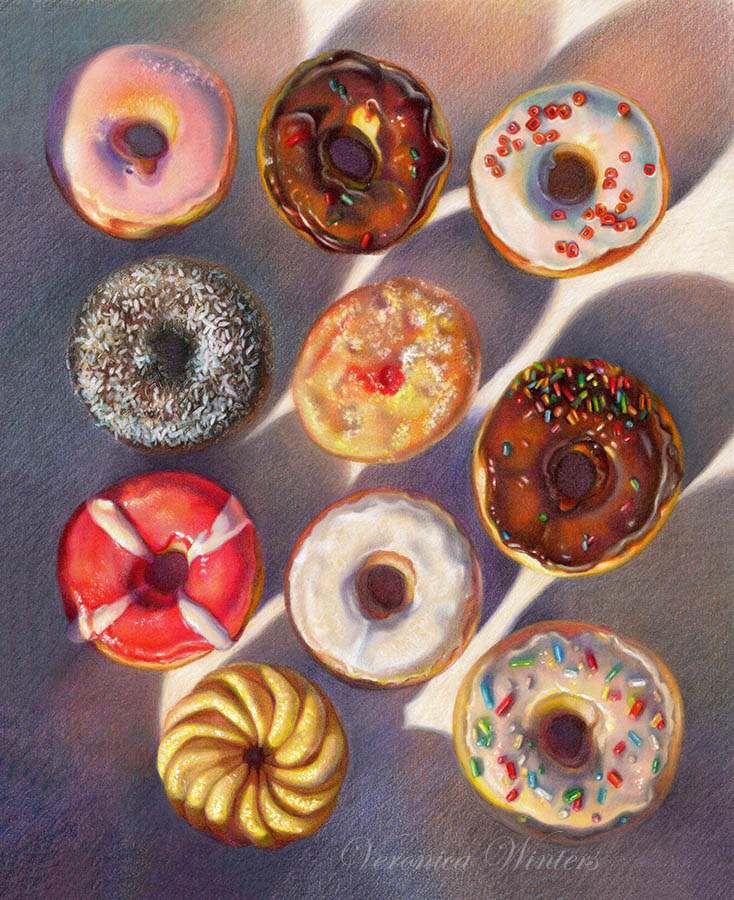
Designed for beginners in colored pencil drawing, this video course consists of 18 video lessons. In this video course you study how to draw various objects in colored pencils. Each video lesson builds up in progression, focusing on a single object to draw.
- Complementary, downloadable pdf file includes line art, color swatches and materials list. For a limited time the artist provides every student with feedback via email. To check out the previews and enroll, click on the image above to follow the link.
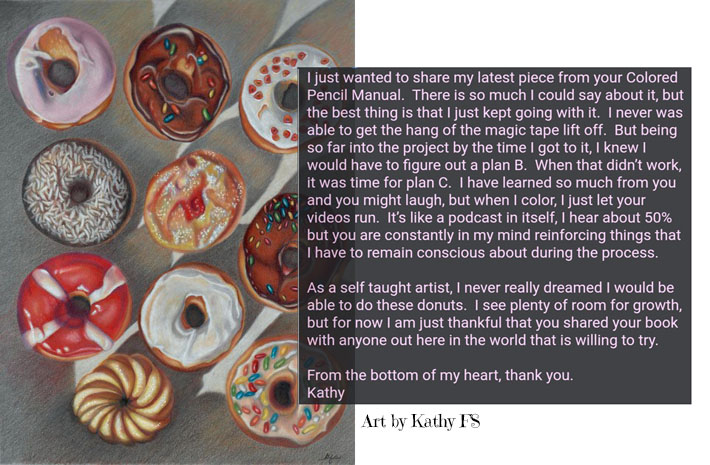
#2 COLOR CRUSH Course for Colored Pencil Artist, video course
Purchase Here
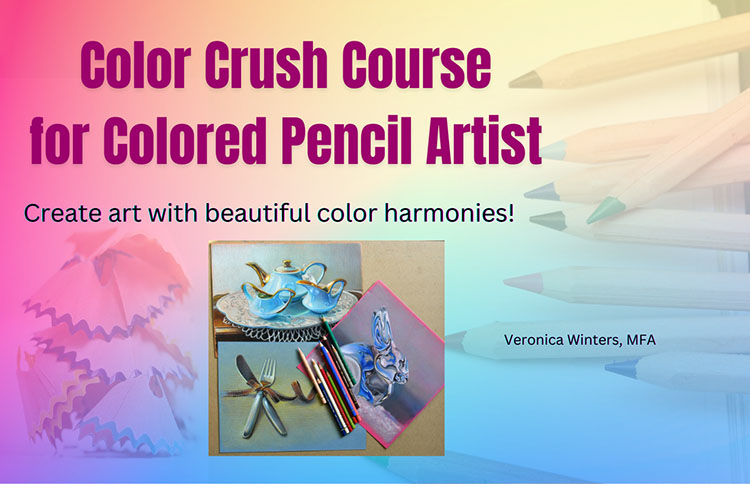
#3 Portrait drawing: creating emotion in colored pencil, video course
Purchase Here
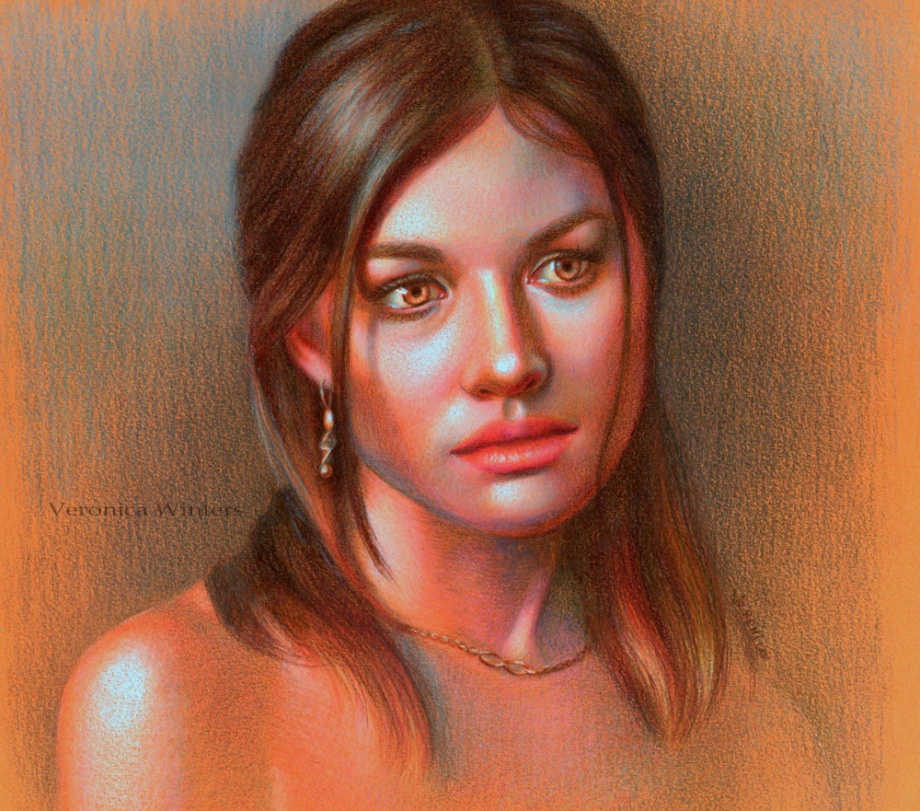
Uncover the secrets to portrait drawing in colored pencil! This unique video course builds up in progression to prepare students to see and capture light on a model and draw portraits in colored pencils from pictures. Even if you don’t draw from the references, you still get plenty of ideas and information on how to create vibrant portraits working with colored pencils.
- The projects consist of lessons—narrated video recordings in which the artist draws on various surfaces and explains valuable colored pencil techniques. Some portrait drawing demonstrations include a downloadable reference.
- This course has downloadable color charts/ color lists for every demonstration. Click on the image to see a complete curriculum for this class! Enroll today.
A sample full lesson from part 4.
#4 Realist oil painting techniques secrets for serious beginners & beyond
Purchase here
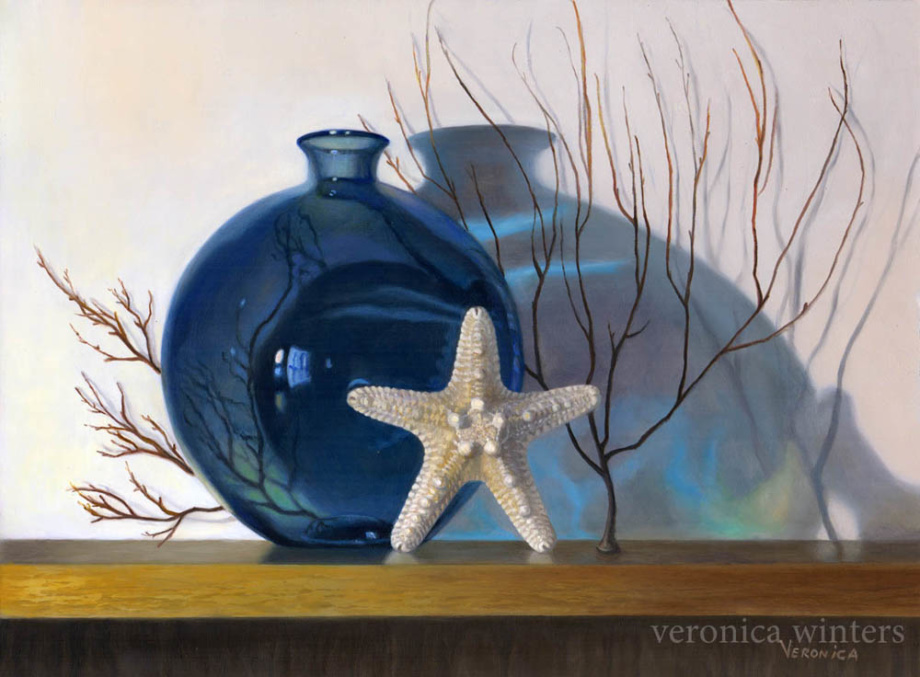
This class is available as online video course now! In this class you’ll see me paint a single still life using traditional oil painting techniques, such as:
- glazing
- grisaille (indirect painting) and
- painting in full color.
I’ll walk you through every step of the painting process that includes:
- prep drawing
- underpainting
- using grays to neutralize chroma (tube colors)
- painting in full-color
- painting textures (in a shell)
- painting glass (in a blue vase)
I also include a step-by-step guide (pdf file) that complements the videos. Download it! This class is for serious beginners and more advanced students who already have good understanding of drawing in color, and wish to proceed to the next step – oil painting. This class will give you classical approach to realist painting that you can apply to your daily painting process. It took me many years of schooling and practice to learn this classical approach to painting that’s summarized in this video. Take advantage of this opportunity. Start learning today!
# 5 Step-by-step colored pencil drawing tutorials
Direct link to step-by-step demonstrations: https://veronicasart.com/product-category/step-by-step-drawing-tutorials/
You will benefit from these colored pencil demonstrations the most if you’ve already had some experience in pencil drawing. These demonstrations are not made for the absolute beginners in drawing. Every step-by-step demonstration includes the art supplies list, color chart, and images in steps to complete the exercise.
- The demonstration comes as a digital pdf file that you can save to your computer and work from at your pace. A few demonstrations have drawing videos that are available for download in addition to a pdf file (sold separately).
- When you complete your payment, an automatic email is sent to your inbox. Please check your spam folder as many of my files go there! If you don’t find the e-mail with the demonstration, please e-mail me. nika@veronicasart.com Don’t worry. I’m happy to send it manually.
#6 Art Instruction books
Direct link to books https://veronicasart.com/product-category/art-instruction-books/
These art instruction books feature step-by-step drawings completed in various media, including colored pencils, graphite, and even soft pastels. The advantage of buying a digital file rather than a Kindle book is that you can open and see large images on your computer screen. Also, if you have a black-and-white Kindle, it makes no sense to buy the art book that explains how to draw in color.
Every book sells as a digital download that you can save to your computer, and open the file whenever you’re ready to work on your art in colored pencil or paint!
If you live in Europe or any other country, please order art books on Amazon in your country. I can’t ship books overseas.
Watch art instruction videos & previews:
Testimonials:
“A committed artist, author, and teacher, Veronica Winters’s illuminated artwork and attention to detail pushes her to create realistic images that breath life into everyday objects. We are honored to present lessons by Veronica in the quarterly publication of COLORED PENCIL Student”
–Sally Ford, Founder & Editor, COLORED PENCIL Magazine


I attended Veronica’s soft pastel’s class, and she was very inspiring. She gave good individual instruction, building confidence in her students by creating a non-competitive environment. Veronica’s instruction is straight-forward and she has a true desire to help you. I attended her class after decades of doing no art, she inspired me to continue my journey and I have since had my art accepted by and displayed in the Von Liebig Art Center in Naples.
–Clare Roberts
Veronica has been an instructor in our Adult Education program for several years offering a variety of drawing techniques in both classes and workshops. Her classes include teenagers and adults, beginners and more experienced artists, and she provides professional and individual instruction to each student. We feel fortunate to have Veronica teaching in our program.
–Marie L. Doll, Executive Director, Art Alliance of Central PA
The experience of learning to draw with graphite and colored pencils with Veronica as a teacher for me was like learning to grow down and up in the world of art. Expressively up, because with each drawing advice I applied more the nuances of finding the skilled way to make a drawing shine through with life, and fruitfully down because for each finished drawing while looking for her to give the ‘teacher’s final remark’ she would always add: How do you like it?
–Kristina Egumenovska, Fulbright Visiting Research Student, Department of Human Development and Family Studies, The Pennsylvania State University
In a very short time, Veronica has helped me to develop confidence in my artistic ability. Even though I am a beginner, I am progressing rapidly under her direction. She is patient and knows how to nurture a student’s natural talent, while helping the learner to stretch and grow in new areas of understanding (such as how to see and draw proper shapes and tones; working with perspective; how to see, work, and play with color). She is a fabulous artist herself, and learning from her is fun, educational, and inspirational.
–Stelli Munnis
As a teaching artist, Veronica inspires students with her own beautiful paintings and drawings, as well as with her personal attention and gentle, thought-provoking, well-planned, and thorough method of instruction.
–Stephanie Hosier, Assistant Director, Galaxy: The Arts in Education Program of Central Intermediate Unit # 10
I just wanted to say thank you for all your help so far – I’ve really been enjoying the class. This has opened up a whole new world for me. Drawing was something I always wanted to learn how to do, but I used to think you needed to be born with some sort of natural talent. I love finding things I want to draw, and I draw as often as I can at home. It’s something I definitely want to keep doing in the future.
–Brianne Hennel
I was admiring your art and your ability to bring out the full potential of colored pencils! I have to say, I am very impressed. I myself love using colored pencils- they are my favorite medium. By the way, your art work is very inspirational.
–Lauren Foley
Would you like to see your testimonial here? Shoot me an e-mail: nika@veronicasart.com 🙂
Copyright
I reserve all rights to my intellectual property. It is illegal to forward, print, electronically copy, or distribute any digital content from this website or from downloads without prior written permission. If you copy, or forward any content, in any form, or grant access to the digital products to someone else, then you’re guilty of copyright infringement and this is a violation of U.S. and international copyright laws. Violators will be prosecuted to the fullest extent of the law.

